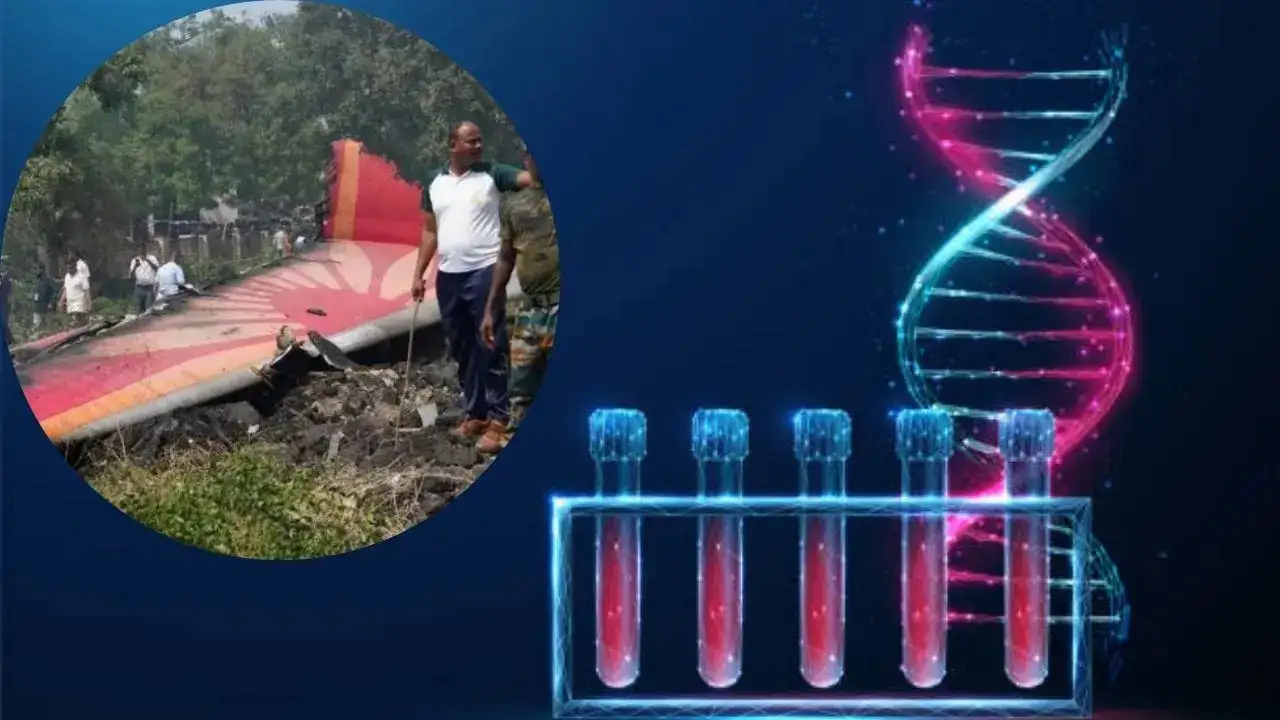
Many family members say they have given blood samples for DNA profiling at a dedicated center for collection, the results of which are only expected after 72 hours
Anxious, grieving, and devastated family members of those who perished in the Air India crash at Ahmedabad have lined up at the Civil Hospital to give DNA samples for the authorities to identify the remains of the deceased from the site. According to experts, since the crash was deadly due to lakhs of liters of fuel that burnt at high intensity, the bodies were charred beyond recognition.
News reports say rescue workers have been tirelessly retrieving the remains and many others.
In the world's worst aviation disaster in a decade, Air India Boeing 787-8 Dreamliner with 242 people on board bound for London took off from Ahmedabad on Thursday but crashed within about 30 seconds, erupting into a massive fireball.
Many family members say they have given blood samples for DNA profiling at a dedicated centre for collection, the results of which are only expected after 72 hours. Doctors have also collected dental samples from many of those who perished, as they say, "Teeth can withstand the heat" and can be used for identification. "We have recorded the dental records of 135 charred victims...it's a very pathetic situation," said Jaishankar Pillai, a forensic dentist, quoted by Reuters.
In the case of dental records, you cannot typically know the identity based on a relative's tebut through reference to the victim's prior dental charts, radiographs, mouth guards, or other records. Doctors say even a selfie photograph of the victim could help doctors match the gap between two teeth to run checks.
How is DNA testing done?
According to Science Direct, in disaster victim identification, DNA profiling is considered to be one of the most reliable and efficient means to identify bodies or separated body parts. It requires a post-mortem DNA sample and an ante-mortem DNA sample of the presumed victim or their biological relatives.
Doctors say usually the collection of an adequate ante mortem sample is technically simple, but the acquisition of a good quality postmortem sample under unfavourable DVI circumstances is complicated due to the variable degree of preservation of the human remains and the high risk of DNA cross-contamination.
DNA samples are collected from muscle, bone, bone marrow, and teeth with a minimal risk of contamination.
The process involves isolating DNA and analysing specific regions of the genome known as short tandem repeats or STRs, which usually vary significantly among individuals, making each person's DNA profile unique. Experts say since DNA is present in almost every cell of the body, even if the tissue is charred, it can be retrieved from bones or small fragments. In the past, forensic scientists have been able to successfully extract DNA from ancient remains – including Neanderthals. AD
The core of DNA fingerprinting lies in the polymerase chain reaction, or PCR – a molecular biology technique used to amplify specific DNA sequences, creating millions or billions of copies from a small sample. According to experts, it is a revolutionary method that allows scientists to study DNA that is otherwise too scarce to analyse. Invented in 1983 by Kary Mullis, PCR has become a cornerstone in various fields like medicine, forensics, and research.
Where are DNA samples tested in India?
The Centre for DNA Fingerprinting and Diagnostics, or CDFD, in Hyderabad is the national hub for handling DNA testing. Apart from that, state-level labs like the Gujarat Biotechnology Research Centre, or GBRC, in Gandhinagar are also capable of collecting and processing DNA samples.
